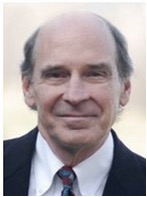 The potential of price transparency tools to help consumers with high out-of-pocket medical expenses remains largely untapped, according to two recent studies published in Health Affairs and other recent research by Consumer Reports and Public Agenda.
The potential of price transparency tools to help consumers with high out-of-pocket medical expenses remains largely untapped, according to two recent studies published in Health Affairs and other recent research by Consumer Reports and Public Agenda.
One study found that while more than half of the nearly 3,000 patients surveyed said they would use a website to shop for healthcare if they knew of one, only 13 percent actually looked for information on future healthcare spending and only 3 percent compared prices and costs across providers.
In the second study, patients with access to a price transparency tool focused on “shoppable” services did not experience overall lower spending on those services, and only 12 percent used the tool to begin with. On a positive note, patients who compared prices for imaging tests decreased spending an average 14 percent.
Research by us at Consumer Reports and a survey by Public Agenda (publicagenda.org) signals additional cautious hope for consumer’s use of price transparency tools in the future. Both projects were sponsored by the New York State Health Foundation (nyshealthfoundation.org) and received additional funding from the Robert Wood Johnson Foundation (rwjf.org).

 Could OpenNotes help push predictive analytics from paternalism to partnership?
Could OpenNotes help push predictive analytics from paternalism to partnership? The idea that payment should be linked to the value lies at the heart of most of the transactions we participate in on a daily basis. Yet, value based payment in healthcare has seemingly run into very rocky waters as of late. It is at this precarious time that stakeholders representing large employers and other purchasers of health care’ took to the Harvard Business Review to
The idea that payment should be linked to the value lies at the heart of most of the transactions we participate in on a daily basis. Yet, value based payment in healthcare has seemingly run into very rocky waters as of late. It is at this precarious time that stakeholders representing large employers and other purchasers of health care’ took to the Harvard Business Review to If you had illusions, or hopes, that the “Kill Obamacare” reality show starring Donald Trump would settle down to a dull roar, events of the last few days should blow those illusions out of the water.
If you had illusions, or hopes, that the “Kill Obamacare” reality show starring Donald Trump would settle down to a dull roar, events of the last few days should blow those illusions out of the water. Some things never change. Joe Flower is one of those things. Pay attention. Joe was the keynote speaker at Health 2.0 Silicon Valley earlier this month. We’re excited to feature the text of his remarks as a post on the blog today. If you have questions for Joe, you can leave them the comment section. You’ll find a link to a complimentary copy of his report Healthcare 2027: at the end of this post. You should
Some things never change. Joe Flower is one of those things. Pay attention. Joe was the keynote speaker at Health 2.0 Silicon Valley earlier this month. We’re excited to feature the text of his remarks as a post on the blog today. If you have questions for Joe, you can leave them the comment section. You’ll find a link to a complimentary copy of his report Healthcare 2027: at the end of this post. You should 







